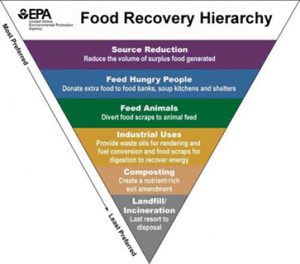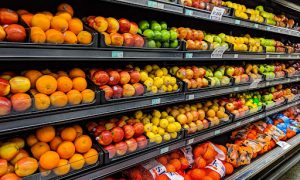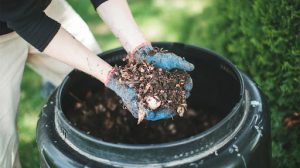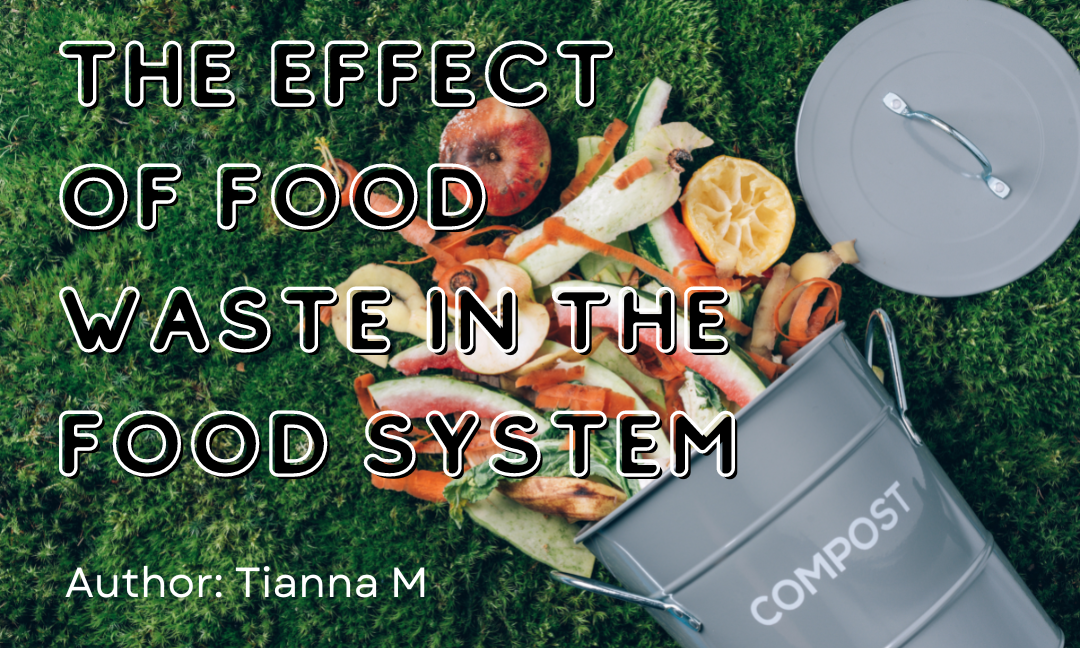Written By: Tianna M
Edited By: Cece Ndiwa
Designed By: Samantha Porte
Published By: Samantha Porte
Food waste is a term we all hear and face on a daily basis. Whether that be not finishing your food at a restaurant, throwing out moldy leftovers that you forgot about, or witnessing big corporations throw out large amounts of perfectly edible food. Food waste is a threat to the environment, and as big of a problem as it is, there are many simple ways to reduce personal food waste.
Food waste is not just common in the average household, it can be found in many parts of the food system such as in the production, storage processing, and distribution phases. Food waste in these stages is often referred to as “food loss”. Food can be lost due to many reasons, such as: seasonal fluctuations, demand, order cancellations, overproduction, inadequate storage handling, transportation, mold, pests, inadequate climate control, cooking losses, and intentional food waste.

Image from www.epa.gov
Above is an image of the food recovery hierarchy sourced from the Environmental Protection Agency in the United States. The image shows the ideal ways to reduce food waste from most preferred at the top with source reduction, and least preferred at the bottom, ending with landfill/incineration. The most ideal way to reduce food loss would be to stop it at the source. This means regulating companies that contribute to food waste, and lessening the rules and regulations on some food production. This could mean funding research to reduce food loss and how to recycle waste, analyzing and predicting future market requirements, and educating and raising awareness about industry and consumers concerning the aesthetic appearance of produce. Many people refuse to buy and sell perfectly good produce simply because it does not look aesthetically pleasing, causing the loss of produce. Another way to help reduce food loss would be supporting services that promote the reduction of food loss and the improvement of sorting and grading storage facilities.
Although many of these solutions would be ideal, most people cannot do much with this information – causing the reduction of food waste to feel very daunting. Fear not, there are many things you can do in your everyday life that will greatly help the reduction of food waste.

Image from https://foodtank.com
We will start at the source for the everyday individual; the grocery store. This is where most people get their food and where food waste starts to occur. The most ideal thing to do in a grocery store is go in with a list from an already pre-planned meal week. This will allow you to buy foods you like and know you will use. Along with this, buying from the bulk bins will stop you from overbuying. If you only need one onion for a recipe, there is no sense buying a whole bag. This goes with most produce, especially the ones that may go off quicker (think bell peppers, tomatoes, etc). When buying produce, be picky about which you choose. Picky in the sense that you do not want to accidentally grab a watermelon that is already molding, or fuzzy blueberries that you will throw out once you get home (I’ve done that more times than I’d like to admit). The one time you should not be picky is when it comes to the visual aesthetics of fruit, a bumpy apple will taste the same as a perfectly round one. Along with buying fresh foods, consider buying dried, canned, or frozen foods (especially flash frozen). This will allow you to have food items that you may not eat right away when fresh, but can enjoy at any time. Purchasing frozen food often results in 47% less household food waste than only purchasing fresh food!
There are many other ways to reduce personal food waste, these methods include:
- Using stale bread to make breadcrumbs
- Using vegetable scraps to make soup stock
- Adding squishy (but not moldy) fruit to smoothies
- Restocking perishables once they are about 75% used
- Keeping leftovers at the front of the fridge with an “eat by” date
- Consider eating parts of produce that normally get discarded
- Roast seeds
- Add pulp to stews, soups, sauces, smoothies, or muffins
- Keep the skin on some produce (tomatoes, potatoes, carrots)

Annie Otzen from Getty Images
Composting is also a wonderful way to reduce food waste. Composting may not be accessible to individuals living in apartment buildings, places with lots of wildlife, and certain city waste regulations, but for those who can compost, it is definitely something to consider. Composting keeps food waste out of landfills, and can add nutrients to soil. All you need to compost is a place outside, some dead branches or leaves, food scraps, and water.

Christopher Knox from Getty Images
About 40% of all food produced in the U.S gets wasted and 95% of discarded food ends up in landfills. As food fills landfills it degrades over time and creates a greenhouse gas called methane. Methane is 25 times more powerful than carbon dioxide causing adverse effects on our environment. By attempting to reduce personal food waste everyday, we are going one step closer to having a greener earth with the reduction of methane production. Overall, reducing food loss at the source would be the most ideal and there are many places that are actively trying to make this happen but that is not the only solution. We all have some control over how much food gets thrown away, and reducing food waste will save you a few trips to the grocery store, and some cash too!
Works Cited
“Food Waste | The Nutrition Source | Harvard T.H. Chan School of Public Health.” Harvard T.H. Chan School of Public Health, https://www.hsph.harvard.edu/nutritionsource/sustainability/food-waste/. Accessed 13 February 2023.
“Tackling Food Waste at Home | The Nutrition Source | Harvard T.H. Chan School of Public Health.” Harvard T.H. Chan School of Public Health, https://www.hsph.harvard.edu/nutritionsource/sustainability/food-waste/food-waste-home/. Accessed 13 February 2023.
“Taking stock: Reducing food loss and waste in Canada.” Canada.ca, 28 June 2019, https://www.canada.ca/en/environment-climate-change/services/managing-reducing-waste/food-loss-waste/taking-stock.html. Accessed 13 February 2023.

